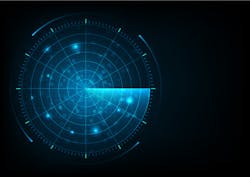When a German scientist discovered in 1886 that radio waves could be reflected off solid objects, he probably did not foresee how that technology would revolutionize commerce, warfare, space exploration, weather forecasting, transportation, law enforcement, and more. The advent of autonomous vehicles is very likely about to widen radar’s use in the near future, to ubiquitous levels. LiDAR, sometimes called 3D laser scanning, uses mostly infrared light. The technology has been used to make high-resolution maps, and has been used in surveying, geomatics, archaeology, geology, seismology, and more. Here are some recent news items on the subjects.
LiDAR leads Way to Lost Worlds
Though it is widely known for its use in advanced driver-assistance systems (ADAS) in autonomous vehicles, LiDAR’s pulsed-laser measuring system is being used to spearhead searches for the vestiges of lost civilizations by archaeologists. In this use, the laser light illuminates the forest floor and measures the reflection with special sensors, gauging the time it takes for the pulses to return to the instrument. They then plot the data with GPS and computers to construct a 3D map of the search area.
According to National Geographic, LiDAR’s strength lies in its ability to discern miniscule surface disparities that can indicate small sites like graves, or grand-scale edifices like a recently-discovered Mayan ceremonial ground. Its limitation is that it sometimes fails to reach the ground, often due to dense foliage.
In a recent airborne LiDAR survey, archaeologists discovered tremendous architecture at Aquada Fenix (Tabasco, Mexico). The site was “hidden in plain sight”. Even locals were oblivious to its large presence, more than 30 feet high, but its immense horizontal dimensions allowed it to escape detection for centuries. According to Colorado State University anthropology professor Christopher Fisher, “In 45 minutes of flying, the LiDAR team accomplished a decade’s worth of archaeological survey”.1
Lockheed Builds Radar Detection Systems for U.S. Navy
Under terms of a $13.2 million order, submarine combat systems experts at Lockheed Martin are building additional AN/BLQ-10 EW systems for U.S. Navy submarines. The system automatically detects, classifies, pinpoints, and identifies potentially hostile radar and communications signals at sea. The AN/BLQ-10 is for Virginia-, Los Angeles-, and Seawolf-class fast-attack submarines, Ohio-class conventional guided-missile submarines, and future Columbia-class ballistic-missile submarines.
The AN/BLQ-10 processes signals from the submarine’s imaging mast, or periscope when the boat is at periscope depth. It provides threat warning to avoid counter-detection and collision; determines the number and location of targets for subsequent prosecution; and conducts intelligence, surveillance, and reconnaissance (ISR) to support a fleet or battle group.2
Ground-Penetrating radar system detects hidden IEDs
Officials of the Army Contracting Command at Aberdeen Proving Ground, Md., announced a $200.2 million order to Chemring Sensors and Electronics Systems (CSES) in Dulles, Va. in May to develop and build Husky Mounted Detection System (HMDS) kits, spare parts, maintenance and training. The system will be employed to detect improvised explosive devices (IEDs) such as underbelly IEDs and antitank landmines in primary and secondary roadways.
The system is a combination of the CSES VISOR 2500 ground-penetrating radar and the Husky vehicle from Critical Solutions International in Carrollton, Texas. The CSES VISOR 2500 detects metallic and non-metallic explosive hazards, pressure plates, and antitank mines. It combines advanced real-time automatic-target-recognition algorithms, integrated metallic and non-metallic threat detection, automatic precision marking, and software.3
All About Circuits, “Archaeologists Employ LiDAR to Uncover the Secrets of Long-Lost Empires,” June 9, 2020
Military & Aerospace Electronics, “Navy wants more AN/BLQ-10 submarine electronic warfare (EW) systems to detect hostile radar signals at sea,” May 1, 2020
https://www.militaryaerospace.com/sensors/article/14175041/submarine-electronic-warfare-ew-radar
Military & Aerospace Electronics, “Army orders ground-penetrating radar system from CSES for detecting hidden IEDs in $200.2 million deal,” May 13, 2020
https://www.militaryaerospace.com/sensors/article/14175811/groundpenetrating-radar-ied-detection
